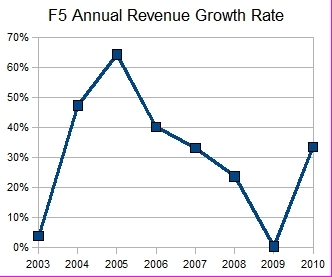Data center stocks were up 20.3% this quarter, well ahead of the 12.3% gain posted by NASDAQ, and 10.7% gain posted by the S&P 500.
Leading the way was Savvis, with a 43% gain, while 7 of the 13 companies we track in the services sector were up over 20%. Akamai bounced back strongly after a weak earnings call dropped into the 30s briefly, while the REITs have been held back a little as their dividend yields are under 4%. While I continue to believe that Wall Street is overestimating the threat to Akamai from smaller competitors and Level 3, Limelight and Internap also posted strong gains during the quarter.
Equinix came back from its 2Q price decline, while reporting 21% year-over-year revenue growth excluding Switch & Data. Competitor Telx filed an additional S-1 in the quarter, but still no news on when it will actually IPO.
Rackspace, continues to do very well operationally and financially, although it is now trading at over 60x annualized earnings with just 20% top-line growth. Nonetheless, it continues to outperform its peers with a 1.6 Revenue/PP&E ratio, a benefit of staying completely out of the co-lo business. Service focus is also helping AboveNet grow, with top line expansion in the mid-teens, and the data center-focused fiber provider is on the verge of surpassing the market cap of over-diversified Level 3, whose revenue has been mostly flat over the last 12 months.
| DataCenterStocks.com Services Index | |||||
| Company | Ticker | Mkt Cap | Sep 30 Close | July 1 Open | Gain % |
| Equinix | EQIX | $4,666,136,500 | 102.35 | 81.22 | 26.02% |
| Digital Realty | DLR | $5,386,410,000 | 61.70 | 57.68 | 6.97% |
| DuPont Fabros | DFT | $1,489,634,500 | 25.15 | 24.56 | 2.40% |
| Rackspace | RAX | $3,246,720,600 | 25.98 | 18.34 | 41.66% |
| Savvis | SVVS | $1,164,459,200 | 21.08 | 14.75 | 42.92% |
| Level 3 | LVLT | $1,555,420,000 | 0.94 | 1.09 | -14.04% |
| Akamai | AKAM | $9,113,189,800 | 50.18 | 40.57 | 23.69% |
| Navisite | NAVI | $125,851,200 | 3.34 | 2.63 | 27.00% |
| Terremark | TMRK | $679,441,400 | 10.34 | 7.81 | 32.39% |
| Limelight | LLNW | $579,340,400 | 5.89 | 4.39 | 34.17% |
| AboveNet | ABVT | $1,311,105,300 | 52.09 | 47.18 | 10.41% |
| CoreSite | COR | $280,432,900 | 16.39 | 16.00 | 2.44% |
| Internap | INAP | $254,359,000 | 4.90 | 4.17 | 17.51% |
| Total | $29,852,500,800 | 20.29% |
| Sep 30 Close | Jul 1 Open | Gain | |
| NASDAQ | 2368.62 | 2109.24 | 12.30% |
| S&P 500 | 1141.20 | 1030.71 | 10.72% |
Note : CoreSite traded for six sessions in the quarter, and has been weighted accordingly
We weighted each stock's gain by end-of-the-quarter market cap.
Our market-weighted DataCenterStocks.com Services Index launches tomorrow at the opening bell with an index value of 100.

